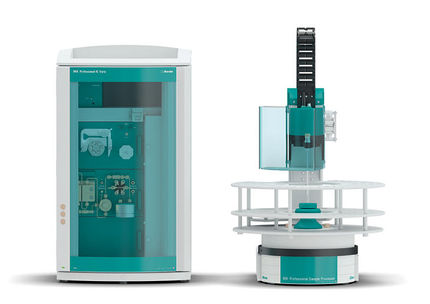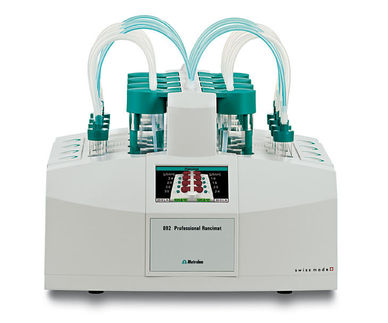Selective estrogen receptor modulator
Selective Estrogen Receptor Modulators (SERMs) are a class of medication that acts on the estrogen receptor.[1] A characteristic that distinguishes these substances from pure receptor agonists and antagonists is that their action is different in various tissues, thereby granting the possibility to selectively inhibit or stimulate estrogen-like action in various tissues.
Members
Members include:
Uses
SERMs are used dependent on their pattern of action in various tissues:
Some SERMs may be good replacements for hormone replacement therapy (HRT), which recent studies have called into question, although the above agents still have an unacceptably high risk of thrombosis and other side-effects to allow for widespread use.
SERMs are also commonly used during PCT or Post Cycle Therapy after the use of anabolic steroids. Bodybuilders who take testosterone supplements will often experience gynecomastia, also known as man-boobs, after a steroid cycle, because the body will attempt to balance estrogen with increased testosterone levels. This increase in estrogen can produce gynecomastia, so body builders will usually cycle a SERM after a steroid cycle to ensure that their body is not flooded with excess estrogen.
Mechanism of action
Estrogenic compounds span a spectrum of activity ranging from:
- full agonists (agonistic in all tissues) such as the natural endogenous hormone estrogen
- mixed agonists/antagonistics (agonistic in some tissues while antagonist in others) such as tamoxifen (a SERM)
- pure antagonists (antagonistic in all tissues) such as fulvestrant (ICI-182780).
The mechanism of mixed agonism/antagonism may differ depending on the chemical structure of the SERM, but for at least for some SERMs, it appears to be related to (1) the ratio of co-activator to co-repressor proteins in different cell types and (2) the conformation of the estrogen receptor induced by drug binding which in turn determines how strongly the drug/receptor complex recruits co-activators (resulting in an agonist response) relative to co-repressors (resulting in antagonism). For example, the prototypical SERM tamoxifen acts as an antagonist in breast and conversely an agonist in uterus. The concentration of steroid receptor co-activator 1 (SRC-1; NCOA1) is higher in uterus than in breast, therefore SERMs such as tamoxifen are more agonistic in uterus than in breast. In contrast, raloxifene behaves as an antagonist in both tissues. It appears that raloxifene more strongly recruits co-repressor proteins and consequently is still an antagonist in the uterus despite the higher concentration of co-activators relative to co-repressors.[2][3]
Actions
The actions of SERMs on various tissues:
- Pituitary gland - clomifene blocks estrogen action, leading to an increase of follicle-stimulating hormone.
- Uterus - tamoxifen may increase endometrial carcinoma risk, but raloxifene does not. Data on toremifene and clomifene is insufficient.
- Breast - all SERMs decrease breast cancer risk, and tamoxifen is mainly used for its ability to inhibit growth in estrogen receptor-positive breast cancer.
- Deep venous thrombosis - the risk may be elevated in all SERMs.
- Cholesterol and triglycerides - levels respond favorably to SERMs.
- Bone turnover and postmenopausal osteoporosis respond favorably to SERMs.
- Hot flashes are increased by all SERMs.
References
- ^ Riggs BL, Hartmann LC (2003). "Selective estrogen-receptor modulators -- mechanisms of action and application to clinical practice". N Engl J Med 348 (7): 618-29. doi:10.1056/NEJMc030651. PMID 12584371.
- ^ Shang Y, Brown M (2002). "Molecular determinants for the tissue specificity of SERMs". Science 295 (5564): 2465-8. doi:10.1126/science.1068537. PMID 11923541.
- ^ Smith CL, O'Malley BW (2004). "Coregulator function: a key to understanding tissue specificity of selective receptor modulators". Endocr Rev 25 (1): 45-71. doi:10.1210/er.2003-0023. PMID 14769827.
See also
- AACR Cancer Concepts Factsheet on SERMs
- STAR: a head-to-head comparison of tamoxifen and raloxifene as breast-cancer preventatives
| Sex hormones and related agents (primarily G03, also L02, H01C) - human endogenous in CAPS |
|---|
Progestogens:
(receptor) | PROGESTERONE, Desogestrel, Drospirenone, Dydrogesterone, Ethisterone, Etonogestrel, Ethynodiol diacetate, Gestodene, Gestonorone, Levonorgestrel, Lynestrenol, Medroxyprogesterone, Megestrol, Norelgestromin,
Norethisterone, Norethynodrel, Norgestimate, Norgestrel, Norgestrienone, Tibolone
Selective progesterone receptor modulator: Asoprisnil, CDB-4124
Antiprogestogen: Mifepristone |
|---|
Androgens:
(receptor) | TESTOSTERONE, Androstanolone, Fluoxymesterone, Mesterolone, Methyltestosterone, (see also anabolic steroids)
Antiandrogens: Bicalutamide, Cyproterone, Flutamide, Nilutamide, Spironolactone |
|---|
Estrogens:
(receptor) | ESTRADIOL, ESTRIOL, ESTRONE, Chlorotrianisene, Dienestrol, Diethylstilbestrol, Ethinylestradiol, Fosfestrol, Mestranol, Polyestradiol phosphate
Selective estrogen receptor modulator: Bazedoxifene, Clomifene, Fulvestrant, Lasofoxifene, Raloxifene, Tamoxifen, Toremifene
Aromatase inhibitor: Aminogluthetimide, Anastrozole, Exemestane, Formestane, Letrozole, Vorozole |
|---|
Gonadotropins:
(FSHR/LHCGR) | ovulation stim.: Clomifene, Urofollitropin
Antigonadotropins:
Danazol, Gestrinone |
|---|
GnRH:
(receptor) | agonist: Buserelin, Goserelin, Histrelin, Leuprorelin, Nafarelin, Triptorelin
antagonist:
Abarelix, Cetrorelix, Ganirelix |
|---|
|







